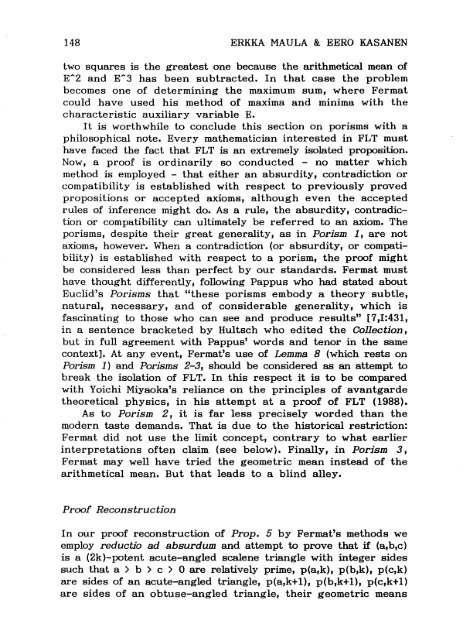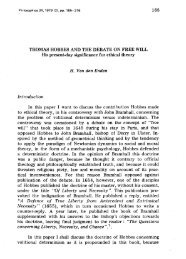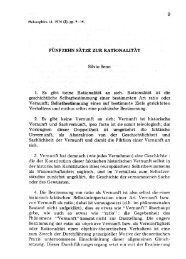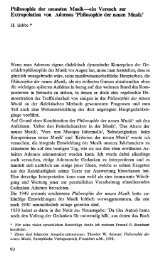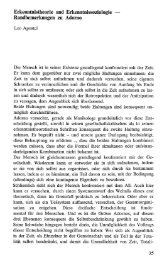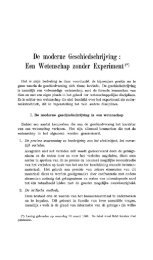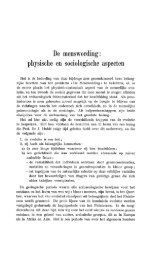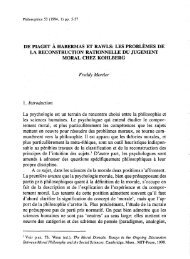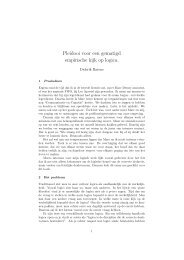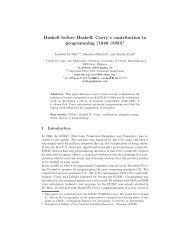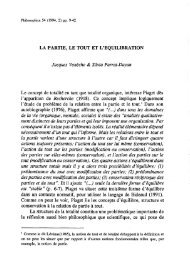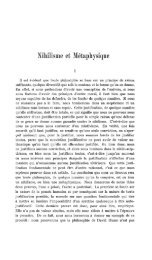CHEZ FERMAT A.D. 1637' Erkka Maula and Eero Kasanen Abstract ...
CHEZ FERMAT A.D. 1637' Erkka Maula and Eero Kasanen Abstract ...
CHEZ FERMAT A.D. 1637' Erkka Maula and Eero Kasanen Abstract ...
Create successful ePaper yourself
Turn your PDF publications into a flip-book with our unique Google optimized e-Paper software.
148 ERKKA MAULA & EERO KASANEN<br />
two squares is the greatest one because the arithmetical mean of<br />
E' .... 2 <strong>and</strong> E"'3 has been subtracted. In that case the problem<br />
becomes one of determining the maximum sum, where Fermat<br />
could have used his method of maxima <strong>and</strong> minima with the<br />
characteristic auxiliary variable E.<br />
It is worth while to conclude this section on porisms with a<br />
philosophieal note. Every mathematician interested in FLT must<br />
have faced the fact that FLT is an extremely isolated proposition.<br />
Now, a proof is ordinarily so conducted - no matter which<br />
method is employed - that either an absurdity, contradiction or<br />
compatibility is established with respect to previously proved<br />
propositions or accepted axioms, although even the accepted<br />
rules of inference might do. As a rule, the ab sur dit y, contradiction<br />
or compatibility can ultimately be referred to an axiome The<br />
porisms, despite their great generality, as in Porism 1, are not<br />
axioms, however. When a contradiction (or absurdity, or compatibility)<br />
is established with respect to a porism, the proof might<br />
be considered less than perfect by our st<strong>and</strong>ards. Fermat must<br />
have thought differently, following Pappus who had stated about<br />
Euclid's Porisms that "the se porisms embody a theory subtle,<br />
natural, necessary, <strong>and</strong> of considerable generality, which is<br />
fascinating to those who can see <strong>and</strong> produce results" [7,1:431,<br />
in a sentence bracketed by Hultsch who edited the Collection,<br />
but in full agreement with Pappus' words <strong>and</strong> tenor in the same<br />
context]. At any event, Fermat's use of Lemma 8 (which rests on<br />
Porism 1) <strong>and</strong> Porisms 2-3, should be considered as an attempt tD<br />
break the isolation of FLT. In this respect it is to be compared<br />
with Yoichi Miyaoka's reliance on the principles of avantgarde<br />
theoretical physics, in his attempt at a proof of FLT (1988).<br />
As to Porism 2, it is far less precisely worded than the<br />
modern tas te dem<strong>and</strong>s. That is due to the historical restriction:<br />
Fermat did not use the Umit concept, contrary ta what earlier<br />
interpretations often claim (see below). Finally, in Porism 3,<br />
Fermat may well have tried the geometric mean instead of the<br />
arithmetical mean. But that leads to a blind alley.<br />
Prao! Reconstruction<br />
In our proof reconstruction of Prop. 5 by Fermat's methods we<br />
employ redu~tio ad absurdum <strong>and</strong> attempt to prove that if (a,b,c)<br />
is a (2k)-potent acute-angled scalene triangle with integer sides<br />
su ch that a > b > c > 0 are relatively prime, p(a,k), p(b,k), p(c,k)<br />
are sides of an acute-angled triangle, p(a,k+1), p(b,k+1), p(c,k+l)<br />
are sides of an obtuse-angled triangle, their geometric means


